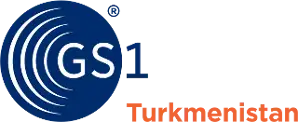SIZES.
Barcodes can be printed in different sizes. The size selected depends on the printing conditions. A small size barcode can be used if good print quality is complemented by good surface quality. An arbitrary symbol size should not be selected to fill the available space on the package. For each type of bar code, its size varies between a minimum and a maximum size. For direct printing, it is determined by the printer after testing. Equipment that creates a bar code from dots and lines most likely cannot print bar codes from the full range of sizes.
Another factor to consider when deciding on bar code size is to take into account the scanning capabilities of the equipment. Symbols intended for retail products may be as small as their print quality allows, while barcodes used in warehouses should be as large as possible to be scanned over long distances by, for example, a forklift operator.
FREE ZONES.
All types of barcodes are required to have a Free Zone before the first and last bar. The Free Zone is a very important element of a bar code and must be taken into account. The size of the Free Zone area varies depending on the type and size of the bar code symbols. Any printing within this area may compromise the readability of the bar code.
COLORS AND CONTRAST.
Scanners work by measuring reflectance. Sufficient contrast between dark and light strokes is required. Sufficient ink saturation is required so that there are no voids in the strokes. Mixed colors are not suitable for barcode printing. It is better to use even colors. Scanners emit a red color. The contrast that satisfies human vision is not always sufficient for a scanner. Bar codes can be printed in color. What color can a barcode be? Bright colors such as red and orange are known to be suitable for light bars (or space between bars) and Free Zones. Dark colors: black, blue and green are used for the strokes. A very shiny coating can change the reflection, so control must be before printing. Transparent packages reduce contrast, so code reading should be checked from the packaged product.
PRINT QUALITY.
Barcode print quality should be checked regularly throughout the process to ensure that the initial grade does not deteriorate. There are many ways to determine the quality of barcode printing. Our GS1 Member Organization can advise you on these. Visual assessment of print quality can also be used. For example, printing a letter H of a given size inside an ITF symbol is 14.
SYMBOL PLACEMENT GUIDELINES.
Scanning productivity and accuracy are greatly increased when the position of the bar code is predetermined. Consistency in bar code placement increases productivity in any scanning environment.
APPLICATION OF SYMBOLS FOR DIFFERENT COMMODITY ITEMS.
The bar code, including the human-readable digits at the bottom, (identification number) must be visible and free of any interference that would interfere with scanning.
Two barcodes with different numbers are not permitted on the package. This is particularly important for multi-packs, especially in transparent wrapping. Multi-packs must carry GTIN numbers different from all internal barcodes. If an item is packaged randomly, the same bar code is applied in multiple places on the wrapper. This provides assurance that at least one bar code will be visible. Scanning is most successful on a smooth surface. Avoid printing on corners, folds, creases, seams and other uneven surfaces. Sometimes the irregular shape of the package does not allow the bar code to be printed on a surface parallel to the scanner slit. This applies to inflated, curved packaging. When choosing how to apply the barcode, consider the printing process. For example, in a flexo printing process, it is necessary to apply the bar code in the direction of printing because of ink bleed. With lithography, there is negligible spreading. Consult your printer in all cases. On cylindrical goods, where the printing direction permits, horizontal (ladder style) barcodes are designed to be applied while the unit is standing. Such a solution is adopted for convex commodity units, such as cans or bottles. The "ladder" style is indispensable for convex areas of small radius.
The barcodes are best placed in the bottom right corner of the back of the package, respecting the "Free Zone" areas around the barcode symbols and the edge rule. An alternative solution is in the bottom corner of the front of the package. Edge Rule: The bar code must not be closer than 8mm or further than 102mm from any edge of the package/container.
LABELING OF BULK PRODUCTS.
Two labels (or applied symbols) must be applied on two adjacent sides, the short side and the right long side (in stock operations this allows the labels to be visible at all times). The minimum number is one label on any side other than the base side.
 Boxes are less than one meter in height. The bottom edge of the bar code must be 32 mm from the bottom edge of the package. Considering the Free Zone, the bar code characters should be at least 19 mm from the side edges. When using the ITF-14 bar code, the outer edges of the bar code from the rightmost and leftmost bars should be 19 mm from the side edges of the box.
Boxes are less than one meter in height. The bottom edge of the bar code must be 32 mm from the bottom edge of the package. Considering the Free Zone, the bar code characters should be at least 19 mm from the side edges. When using the ITF-14 bar code, the outer edges of the bar code from the rightmost and leftmost bars should be 19 mm from the side edges of the box.

